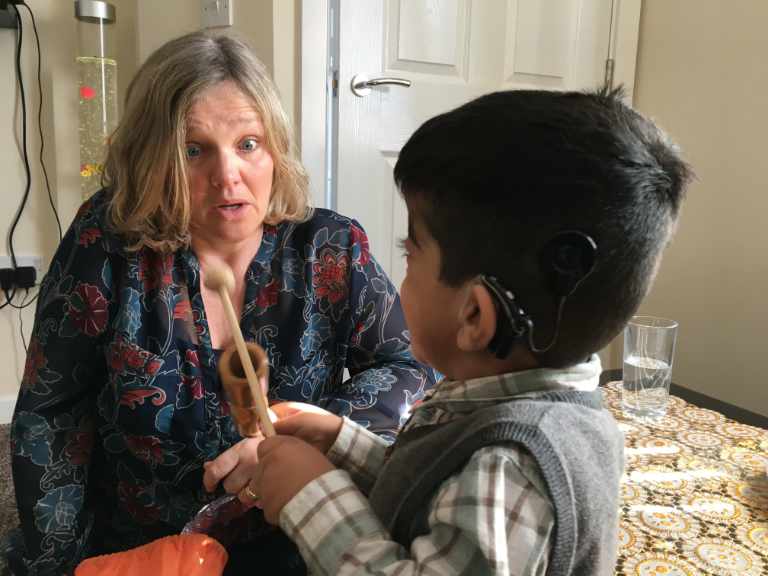A cochlear implant is a special type of hearing aid for severe to profoundly deaf adults and children.
The inside part is implanted in the mastoid bone, which is behind the ear and the electrode array is inserted into the cochlea. When the processor (the external part) is worn, the cochlear implant sends an electronic signal directly to the nerve fibres.
Cochlear implantation requires an operation.
The cochlear implant has parts inside and outside of the head.
The inside part is a magnet and a electrode array
The outside parts include a sound processor and transmitter coil.
Did you know each electrode stimulates a different area of the cochlea? This enables you to hear different pitches, just like pressing keys on a piano.
This sound processor is worn behind the ear. Children may use a body worn battery pack and retention accessories, such as a softband, kiddie clip or huggies.
Normal Sound?
People often ask if a Cochlear Implant enables people to hear sound normally. Here is some information:
An implant produces a perception of sound which differs from “normal” hearing. Cochlear implant users often describe this as a “mechanical” or “electronic” sound. Most patients eventually get used to this and it becomes ‘normal’ for them.
Rehabilitation is required after implantation to allow users to gain maximum benefit from their implant. Over time the vast majority show very significant improvements in their ability to understand speech without lip-reading and distinguish between environmental sounds. Over time, many implantees have been able to use telephones in certain circumstances and some can listen to the radio and enjoy music.



